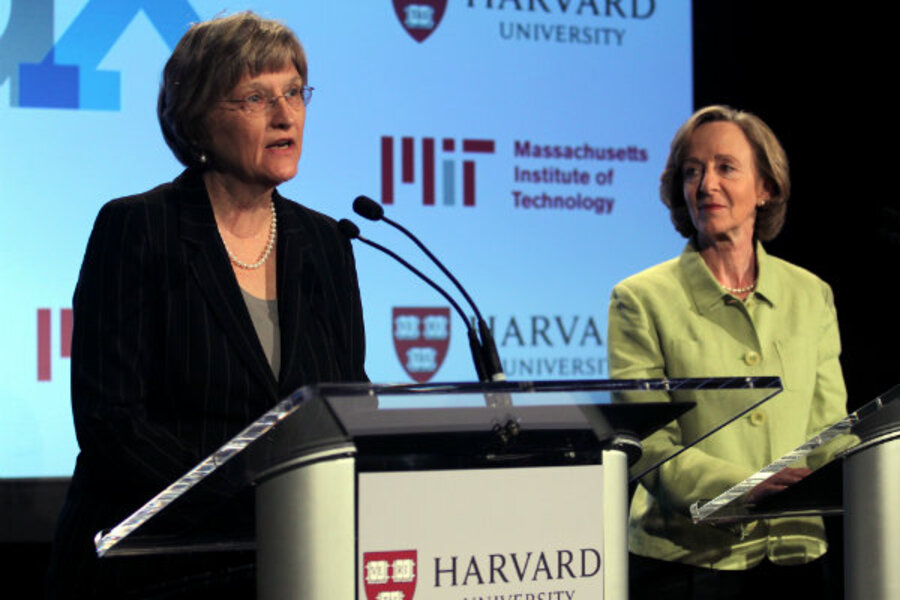What superstorm Sandy taught me about the failures of online learning
Loading...
| Bronxville, N.Y.
As a college English teacher whose school was closed for a week by superstorm Sandy, I learned an important hurricane lesson, one that I suspected all along: Online teaching is no substitute for the real thing in person. It rules out the most essential ingredient of the classroom and lecture hall – real-time collaboration between teacher and student.
When Sandy struck, my students and I did not sit around twiddling our thumbs. We began a series of email exchanges. I read papers, marked them, and emailed them back within 24 hours. By the standards of any online course, my students and I were having high levels of contact. There was plenty of “feedback” and no slacking off on the reading workload.
By online standards my students and I were successfully carrying on a course, but we were in fact engaged in pantomime. Our reading and writing assignments fulfilled formal requirements but missed out on the kind of personal exchange that is fundamental to learning.
In my emails back to my students, I was able to point out where their interpretations of a novel lacked textual evidence. I was even able to show them where their writing was murky. But what was impossible for me to do – short of sending an endless stream of e-mails – was find out through a meaningful conversation what my students were thinking when they misread a passage or got klutzy in their writing.
Any teacher can praise or criticize a student. That’s easy. But the key to good teaching is figuring out with students why they approached an assignment the way they did. Genuine growth in students comes not from them trying to fulfill their teacher’s demands, let alone please their teacher, but from them coming to the conclusion that there is a better way to read a book or write a paper than they first tried.
That better way has to be negotiated, however. It has to incorporate students’ own opinions, and it has to begin with the place students are at when they enter a course.
A class meeting or one-on-one conference lets a teacher deal with all of these issues. The teacher and student get to see one another’s faces, get to know whether a lesson is pleasurable or tedious, get to figure out how far to push an issue.
Email falls short in all these departments, and online courses with their mechanistic reliance on chat rooms, standardized assignments, and PowerPoint makes matters even worse in their fast-food approach to learning.
At a time when colleges and universities are competing to see which can win the rankings wars and which can fund as many foreign campuses as possible, it is clear why online earning has such appeal. At its heart is a winner-take-all psychology. Get the best lecturer money can buy, hire a group of anonymous, poorly paid assistants (who cares if they even have Ph.D.s) to mark online papers, and you have a moneymaker that eliminates the need for low teacher-student ratios as well as dorms and deans.
Harvard and MIT, which are offering edX, and Stanford, Princeton, Penn, Michigan, and Berkeley, which are offering Coursera (all for free), are giving online learning respectability, even as they cater to the students on their own campuses. But for these elite schools, online learning is just another way to push their brand and thus make more money. Even when they offer large lecture courses to hundreds of their own students, they offer them through a professor who is physically present and can take questions.
The real danger from the online fad is that politicians and voters will come to think online courses are good enough for the mass of students in their state (especially those in community colleges) and treat them as a silver bullet rather than a cost-efficient supplement to conventional teaching. As a result, the growing divide between America’s top schools and those charged with the higher education of most of the rest of the country will widen even further.
In 1854 Charles Dickens warned against dehumanizing education in his classic novel, “Hard Times.” In Dickens’s story, an unfeeling schoolmaster, Thomas Gradgrind, chokes the life out of his pupils by insisting, “Facts alone are wanted in life.” But Gradgrind at least does his damage in person and finally acquires self-doubt. Today’s online-education advocates have managed to keep the joy and emotions of education at a distance Dickens did not begin to imagine, and still worse, on the whole, most show no sign of possessing an ounce of self-doubt.
Nicolaus Mills is professor of American Studies at Sarah Lawrence College and author of “Winning the Peace: The Marshall Plan and America’s Coming of Age as a Superpower.”





